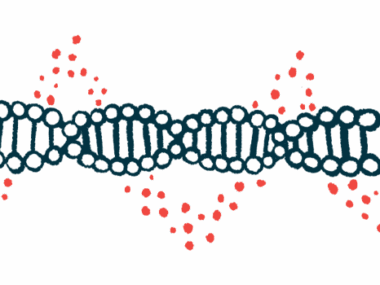Activating Brain Receptors in Mice Reverses Rett Learning Deficits
Written by |

Activating the mGlu2 and mGlu3 receptors in the brain reversed learning deficits in a Rett syndrome mouse model, a study reported.
The levels of both of these receptors were significantly lower in the brains of Rett mice, as well as Rett patients.
These results support further investigation into mGlu2 and mGlu3 as therapeutic targets to improve cognitive abilities, according to researchers.
The study, “Exploration of group II metabotropic glutamate receptor modulation in mouse models of Rett syndrome and MECP2 Duplication syndrome,” was published in Neuropharmacology.
In Rett syndrome, a deficiency in MECP2 — a protein that regulates the activity of other genes that play a critical role in brain function and development — leads to motor disturbances, cognitive decline, impaired social skills, and breathing abnormalities.
MECP2 Duplication syndrome (MDS) is a related condition characterized by an excess of MECP2, resulting in moderate to severe intellectual disability, weak muscle tone in infancy, feeding difficulties, speech impairment, or muscle rigidity.
Because MECP2 controls the activity of other genes, altered levels of it can affect various downstream biological processes, including the group II mGlu receptors called mGlu2 and mGlu3. Studies show the production of these receptors is sensitive to MECP2 levels, and they may play important roles in cognition.
Researchers at Vanderbilt University in Tennessee investigated the relationship between mGlu2 and mGlu3 and cognition in Rett and MDS, and measured responses to molecules that activate or suppress these receptors.
Initial experiments showed significantly reduced activity of the genes that encode the mGlu2 (GRM2) and mGlu3 (GRM3) receptor proteins in postmortem brain tissue samples from female Rett patients.
In female Rett mice lacking the Mecp2 protein (lower case for mice), there was significantly less Grm2 gene activity and lower amounts of mGlu2 receptor protein in the cerebral cortex, the outer layer of the brain, but not Grm3 and mGlu3. In the hippocampus area, also involved in cognition, both Grm2 and Grm3 genes were significantly less active with reduced levels of both receptor proteins.
“These clinical and preclinical data provided rationale for investigating the role and therapeutic potential of group II mGlu receptors in [Rett] and related disorders,” the research team wrote.
An MDS mouse model, modified to overproduce human MECP2, was examined to further explore the relationship between mGlu2 and mGlu3 with MECP2. Comparably, Grm2 and Grm3 genes were significantly more active in the hippocampus with higher mGlu2 and mGlu3 protein levels.
To investigate how altered mGlu2 and mGlu3 activity impacts learning and memory, mice were trained to associate a sound tone with a mild electrical shock on the feet. Four tone-shock pairings were conducted, and the percentage of time the mice froze between the tone and the shock (trace period) was measured to reflect fear-based learning and memory behavior, referred to as trace fear acquisition.
As expected, healthy mice showed normal learning behavior, whereas mice lacking Mecp2 showed a deficit in trace fear acquisition, characterized by a drop in the percentage of time they froze. In opposition to Rett mouse models, MSD models showed enhanced trace fear acquisition, as shown by an increased percentage of time freezing.
Based on these results, the researchers hypothesized that “these changes in trace fear behavior might be sensitive to mGlu2/3 receptor modulation.”
This was confirmed after Rett mice were treated with a known activator of mGlu2 and mGlu3, called LY379268, which significantly reversed the trace fear acquisition deficit seen in untreated Rett mice. LY379268 did not impact the behavior of healthy mice.
Combined treatment with a second molecule (LY341495) that blocked LY379268’s action resulted in freezing behavior that was indistinguishable from untreated mice, which supported the “ability of mGlu2/3 activation to enhance the trace fear acquisition response in [Rett] animals,” the researchers wrote.
Lastly, a similar but opposite experiment was conducted in MDS mice, in which they were treated with LY341495 that blocks mGlu2 and mGlu3. Treated MDS mice exhibited a significantly reduced percentage of time being frozen comparable to healthy mice.
“Altogether, these data highlight the role of group II mGlu receptors in [Rett] and MDS and demonstrate that both mGlu2 and mGlu3 may be potential therapeutic targets for these disorders,” the scientists concluded.






